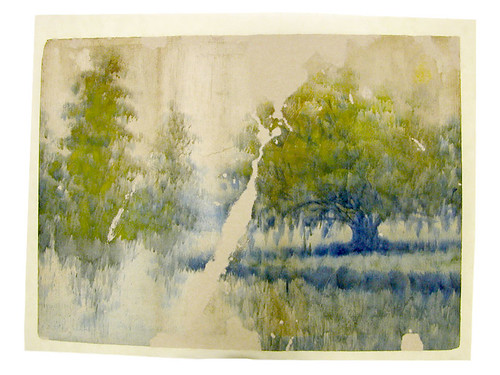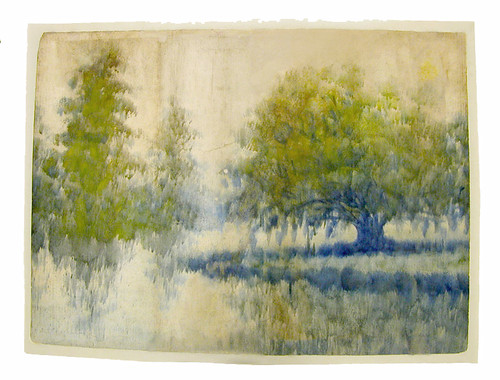
Before (left), during (middle) and after (right) treatment images of an A. J. Drysdale painting from New Orleans.
This week marks the fourth year anniversary since that horrific time, so we thought we would profile this treatment in remembrance of the cataclysmic events which caused so much ruin and to pay homage to the massive rescue efforts which brought our nation together.
This oil painting was done on an artist's board somewhere around the earlier part of the last century. As you can see, the painting before treatment (below) shows a great amount of damage. There are many losses to the image area especially along the upper and lower edges. The artwork has a lot of wavyness and dirt and mold damage due to water damage from the hurricane flooding.

Artist boards of this type were made with layers of brown wood pulp board plied together and then covered with a thin white paper as a cover. The plies (thin layers) were glued together to form one layer. However, due to the water damage, the thin paper containing the painted image was separating from the backing board in many places. Because the wood pulp board was poor quality anyway, it was necessary to remove the paper from the wood board. This however, was a very very scary prospect. The paper was incredibly delicate, thin and brittle. Imagine trying to remove the the printed image from a modern box of cereal free of the brown cardboard fibers and without causing a lot of damage to image area.


The painting after being mounted to Japaense tissue (left) and the complete treatment with inpainting (right).
It was a very tense treatment, but we were successfully able to separate the paper and safely stabilized by mounting it onto a Japanese tissue backing using wheat starch paste. The mud on the surface of the painting was delicately removed, and losses were filled and inpainted. This painting represented a wonderful success story, and we were proud to be a small part of the huge restoration effort in the aftermath of Hurricane Katrina




No comments:
Post a Comment